Our Services
Full Access
We have full access to all accredited Laboratories in Victoria allowing us prompt, accurate same day results from samples collected in the morning and next day results for afternoon collections.
Tests ranging from blood tests for health to reproduction swabs are all handled efficiently and professionally with results emailed out and a phone call to discuss.
Please feel free to call us and discuss your needs.

Lameness Investigation
- Clinical examination areas
- Trotting up
- Lunging on hard or soft surface
- Radiography
- Ultrasonography
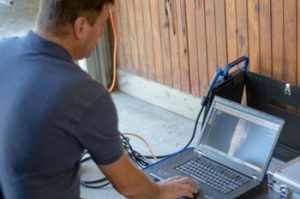
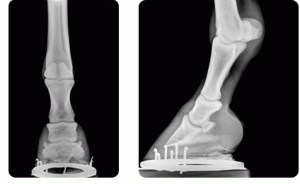
Lameness is a common presenting complaint of horses
Ranges from small losses in quality of movement to non-weight bearing gaits.
Using an initial clinical exam and history we start to work out which leg, or legs, are involved.
We further refine this to certain areas using flexion tests, hoof testers and diagnostic nerve blocks to pinpoint the areas of pain.
Further investigation of these areas using digital radiography and/or ultrasound may then be required.
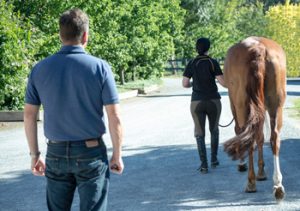
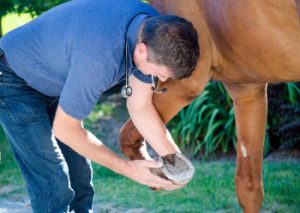

Stud Work
The following Services are available:
- Pre season disease screening
- Gynaecological management of breeding mares
- Mare infertility investigations
- Stallion infertility investigations
- Artificial insemination with Fresh, Chilled and frozen semen
- Semen collection and freezing
- Competition stallion management
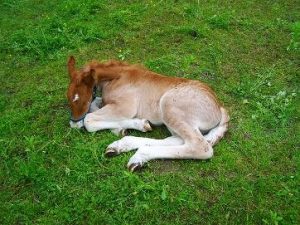
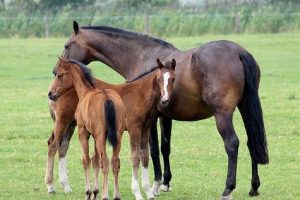
Endoscopy
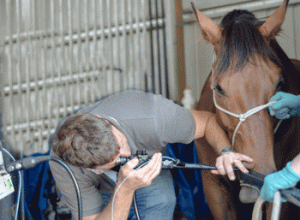 Our practice has a portable fibre optic endoscope that allows for diagnosis of various respiratory diseases (eg. Roaring/Bleeding) via direct visualisation of the respiratory system
Our practice has a portable fibre optic endoscope that allows for diagnosis of various respiratory diseases (eg. Roaring/Bleeding) via direct visualisation of the respiratory system
Endoscopy allows the clinician to see anatomical structures in the horse and is a key tool in the diagnosis of many conditions.
Both portable fibre optic endoscopy and video endoscopy are available at PEV, and commonly used to examine and evaluate the upper respiratory tract, upper gastrointestinal tract, urethra and bladder, as well as the uterus in the mare.
Alternative Therapies
Using acupuncture, manipulation and homeopathy, we can further attend to equine welfare.
This may be as simple as calming your competition horse down when the pressure is up, to enabling your best friend to be more supple under saddle.
ACUPUNCTURE
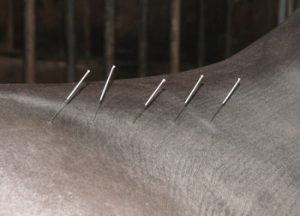 Acupuncture is defined as the stimulation of a specific point on the body with a specific method, resulting in a therapeutic homeostatic effect. The specific point on the body is called “Shu-Xu” or acupuncture point (acupoint). The ancient Chinese discovered 361 acupoints in humans and 173 acupoints in horses.
Acupuncture is defined as the stimulation of a specific point on the body with a specific method, resulting in a therapeutic homeostatic effect. The specific point on the body is called “Shu-Xu” or acupuncture point (acupoint). The ancient Chinese discovered 361 acupoints in humans and 173 acupoints in horses.
Modern research shows that acupoints are located in the areas where there is a high density of free nerve endings, mast cells, small arterioles, lymphatic vessels and the dense connective tissue represents a different spatial configuration as compared to the rest of the normal skin. A great number of studies indicate that stimulation of acupoints induces the release of β – endorphin, serotonin and other neurotransmitters. Therefore, acupuncture for pain relief is well supported by these scientific studies. As more studies are conducted, the mechanism of this ancient therapy will be better understood.
- Neurological disorders: Laryngeal hemiplegia (roaring), facial and radial nerve paralysis, seizure.
- Gastrointestinal disorders: Diarrhoea, gastric ulcers, colic, prolapse, constipation and impaction.
- Other Chronic conditions: Recurrent airway obstruction (heaves), asthma, cough, uveitis, behavioural problems, Cushing’s disease, hypothyroidism, infertility, hyperthyroidism, anhidrosis (non-sweater), renal failure, geriatric weakness and skin problems.
- Performance enhancement: Immune system stimulation and the prevention of disease.
Cautions and Contraindications
Acupuncture is cautiously used, or may be contraindicated with the following conditions:
- Fracture
- Pregnancy
- Open Wound
- Infectious diseases
Is acupuncture painful?
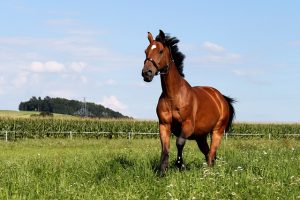 A proper acupuncture treatment may induce distention, and heaviness sensation along with contraction, of local muscle. Over 95% of patients are comfortable with acupuncture therapy. Due to the relaxation effect, some animals will fall asleep during acupuncture treatment. Sedation is not recommended before acupuncture treatment, as it may interfere with the acupuncture effect.
A proper acupuncture treatment may induce distention, and heaviness sensation along with contraction, of local muscle. Over 95% of patients are comfortable with acupuncture therapy. Due to the relaxation effect, some animals will fall asleep during acupuncture treatment. Sedation is not recommended before acupuncture treatment, as it may interfere with the acupuncture effect.
What physiological effects are induced by Acupuncture?
Numerous studies show that acupuncture stimulation induces the following physiological effects:
- Analgesic effect
- Regulation of gastrointestinal motility
- Anti-inflammatory effect
- Immuno-regulation
- Hormone and reproductive regulation
- Antifebrile effect; microcirculation promotion
What can acupuncture help?
Clinical trials indicate that acupuncture therapy can be effective in the following conditions:
Musculoskeletal problems:Lameness, muscle soreness, back pain, disc problems, arthritis, osteoarthritis and degenerative joint disease, laminitis, navicular disease, sport-related injuries including tendons and ligaments, muscle, joint and bone injuries.
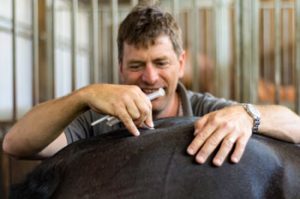
MANIPULATION
Benefits of Equine Massage & Manipulation Therapy
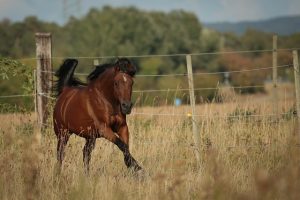 Horses are athletes – from the hacking pleasure horse right through to the top level competition horse. Horses have adapted over time to carrying the weight of a rider on their back and to the demands we place on them, and we have the responsibility to make sure they can do this as comfortably as possible.
Horses are athletes – from the hacking pleasure horse right through to the top level competition horse. Horses have adapted over time to carrying the weight of a rider on their back and to the demands we place on them, and we have the responsibility to make sure they can do this as comfortably as possible.
Human athletes always warm up and stretch before competing and have regular therapy sessions to enable them to perform at their best – horses can benefit from the same treatment to help them keep fit and healthy and at the top of their game.
Equine Sports Massage and Manipulation can help to prevent injury to your horse as well as aid recovery. Plus, a massage is a thoroughly enjoyable experience for the majority of horses!
Here are some of the benefits of equine massage and passive stretching combined with joint manipulation:
Benefits of Equine Massage – Horse running freely and comfortably.
Increase and improve circulation/blood flow
- Warms the muscles
- Removes lactic acid
- Relieves muscle fatigue
- Releases muscle spasm
- Improves muscle tone and elasticity
- Improve range of movement
- Reduces risk of pulled muscles
- Minimise stiffness
- Improve and reduce muscle atrophy/wastage
- Induces rapid cell renewal and tissue repair
- Speeds up recovery
Increase joint movement and flexibility
- Helps ease painful, sore joints
- Helps keep joints flexible
Other Benefits
- Relax the nervous system
- Assist in co-ordination
- An effective way of identifying injury post-competition
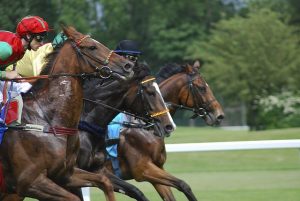 There are many tell-tale signs of when a horse is suffering from a problem that could be helped by massage and manipulation therapy. On our how do I know if my horse needs a treatment page we provide more details on how to find out whether your horse could benefit from equine massage therapy?
There are many tell-tale signs of when a horse is suffering from a problem that could be helped by massage and manipulation therapy. On our how do I know if my horse needs a treatment page we provide more details on how to find out whether your horse could benefit from equine massage therapy?
Although there are many benefits of equine massage therapy it is not a cure. However, scientific research has shown that it can help to relieve pain and discomfort, improve a horse’s range of movement and enhance performance as well as inducing relaxation as detailed in this article by Horse and Hound. Muscles and joints never forget what has happened to them, so an old injury could still be affecting the horse.
General Well being
Horse Owners
At PEV we appreciate that horses are highly regarded by their owners and such require expert, professional care to ensure optimum performance and minimum disruption to training schedules and planned commitments.
- As well as routine equine veterinary services, we offer individually tailored packages to meet the needs of our professional customers and their horses. Types of services we can offer include:
- Allocation of a specific, highly qualified vet who will get to know and understand the requirements of individual horses and of the owner’s day to day veterinary requirements.
- Planned, routine visits to accommodate individual schedules
A range of on-yard diagnostic imaging facilities to minimise disruption and keep costs to a minimum.
These include
- Portable Radiography
- Ultrasonography
- Endoscopy
Performance Investigation
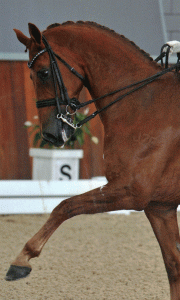
Our poor performance investigation includes:
- Lameness assessment
- Routine blood test
- Resting/dynamic endoscopy
- ECG/Echocardiography
We are often presented with horses which are not performing up to their expected ability.
To get to the root of the problem requires perseverance and a good diagnostic work up.
It is always important to carry out a full lameness examination to assess if there are any orthopaedic problems which could be contributing to the horse’s poor performance.
We have soft and hard surfaces for lunging and all weather ménage.

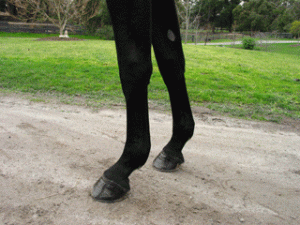 This enables us to see the horse under differing conditions as in some cases lameness will only be evident under saddle or on a hard surface.
This enables us to see the horse under differing conditions as in some cases lameness will only be evident under saddle or on a hard surface.
We will often run a routine blood test to check for evidence of underlying disease.
Occasionally we will carry out blood tests before and after exercise to check for muscular conditions.
REQUEST AN APPOINTMENT NOW!
